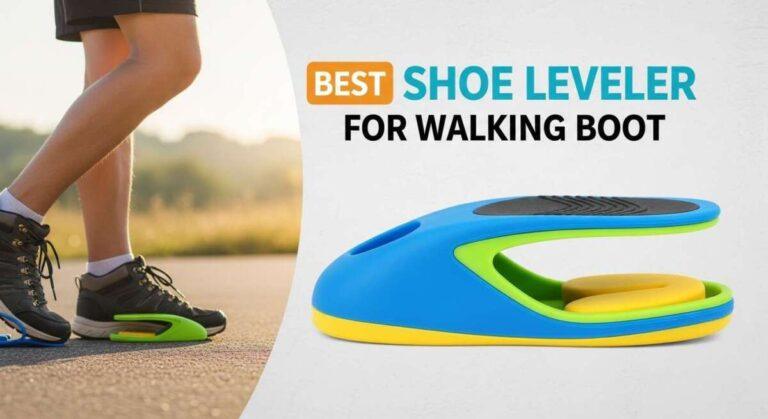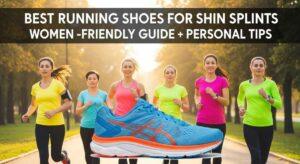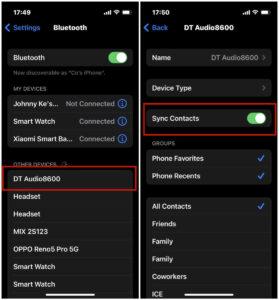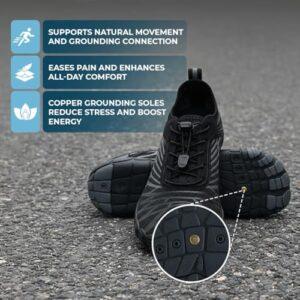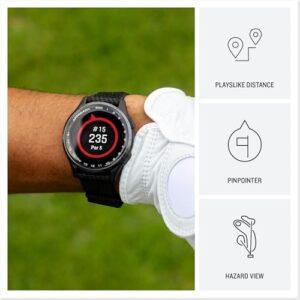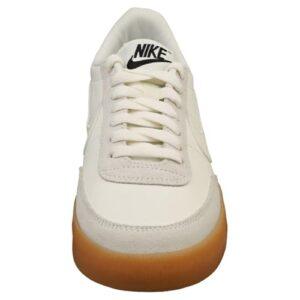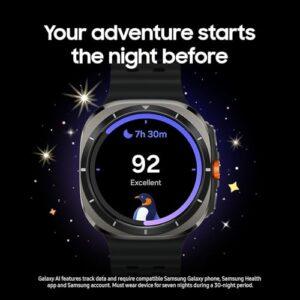Hey there! If you’re wearing a walking boot, I know how tricky it can be to move around. When I broke my foot a few years ago, I had to wear a boot for weeks. At first, I thought it would be simple—just walk carefully. But soon, I realized something was off. My other leg felt shorter. My back started to ache, and I even felt a little lopsided.
That’s when I learned about shoe levelers (sometimes called shoe balancers or shoe lifts). These handy tools can make a world of difference. They even out the height difference between your walking boot and your other shoe. When used right, they make walking smoother, safer, and way more comfortable.
So, let’s talk about the best shoe leveler for a walking boot—the ones that actually work in real life. I’ll share my personal experiences, some expert advice, and what to look for when choosing one.
Why Shoe Levelers Matter When Using a Walking Boot
If you’ve ever worn a walking boot, you probably noticed how it lifts your injured foot higher than the other. That uneven height can mess up your balance. Here’s why that happens and why shoe levelers are worth it.
- Leg length difference: Even half an inch can throw off your posture and cause hip or back pain.
- Better balance: A shoe leveler helps you walk evenly and keeps your spine aligned.
- Less strain: With a balanced gait, you reduce pressure on your knees, hips, and lower back.
- Faster recovery: When your body moves naturally, healing feels smoother and more comfortable.
I learned this the hard way. During my recovery, I didn’t use a leveler for the first few days. My back started hurting, and I noticed I was limping worse than before. Then my physical therapist recommended the EVENup Shoe Balancer. I tried it—and wow, what a difference! I could finally walk without pain or wobble.
What Makes a Shoe Leveler “The Best”?
When I started comparing different brands, I learned that not all shoe levelers are the same. Here’s what really matters:
- Height adjustment: You might need ½”, ¾”, or even more depending on your boot’s height.
- Easy fit: It should attach securely and not slip.
- Strong grip: A non-slip sole helps prevent falls.
- Durable material: You want something solid and steady.
- Comfort: No sharp edges or weird pressure points.
- Medical approval: Some are recommended by doctors or physical therapists.
- Compatibility: Works with your walking boot and regular shoes.
Now that you know what to look for, let’s go over the top picks. These are the five best shoe levelers for walking boots, based on experience, comfort, and real results.
Evenup The Authentic Shoe Balancer Size Large

What It Is & How It Works
If you ask most physical therapists for a shoe leveler, they’ll probably mention EVENup. It’s one of the most trusted names out there. This balancer uses adjustable inserts that let you raise your shoe by ½”, ¾”, or 1¼”. You simply stack the layers you need and strap it under your shoe. The rigid plastic base keeps it stable while you walk.
My Experience
After my foot fracture, I tried several brands, but EVENup was by far the best. I wore it under my sneaker, opposite my boot. Within two days, my gait felt smoother. The pain in my back and hips eased up a lot. It took a few tries to get the height right, but once I did, I could move almost normally.
Pros
-
Very adjustable with multiple lift options
-
Stable and strong design
-
Works with most walking boots and regular shoes
-
Recommended by orthopedic and foot specialists
-
Really improves balance and gait
Cons
-
The setup can take a few minutes
-
Larger sizes may look bulky on narrow shoes
-
Slightly higher price than basic brands
Best for: Anyone who wants medical-grade balance and doesn’t mind a small setup process.
Zyralventa Shoe Leveler

What It Is
The Zyralventa shoe leveler is easy to spot because of its bright orange design. It uses a Velcro double-strap system that wraps around your shoe tightly. It’s medium-sized and fits men’s US 8.5–10.5 and women’s US 9–11.
My Experience
I used the Zyralventa when I had a mild ankle sprain. I liked that it was simple to put on and take off. The Velcro made it super adjustable. The bright color was a bonus because it made me feel safer walking outside in the evening. It’s softer than the EVENup, so it’s better for light use.
Pros
-
Quick to put on and remove
-
Comfortable, flexible design
-
Bright color adds visibility
-
Lightweight for travel
-
Great for switching between shoes
Cons
-
Not as firm or long-lasting as hard plastic
-
Only one color available
-
Can flatten slightly under pressure
Best for: Short-term use or when you need to move between shoes often.
Procare Shoelift Shoe Balancer

What It Is
The Procare ShoeLift is another trusted option. It’s made by Procare, a medical brand known for orthopedic gear. This balancer gives a 1-inch lift and has a strong non-slip sole. It’s designed for both men and women and is often used in hospitals or physical therapy clinics.
My Experience
I used the Procare ShoeLift for indoor use and during therapy sessions. It felt stable on smooth floors, especially tiles and hardwood. I liked that it didn’t slide or tilt. It’s not as adjustable as the EVENup, but it’s great for consistent height correction.
Pros
-
Very stable with solid grip
-
Quick attach-and-remove design
-
Durable and reliable
-
Sold in medical supply stores
-
Works well for both men and women
Cons
-
Only one height (1 inch)
-
Slightly bulky for smaller shoes
-
Limited flexibility
Best for: People who need solid, non-slip stability for daily use.
Shoe Balancer For Use With Walking Boot And Uneven Legs

What It Is
If you’re on a tight budget, the Mathgetin shoe leveler (or similar generic versions) is a decent pick. It’s a simple design made to work on either the left or right shoe. It helps reduce leg-length difference caused by wearing a walking boot.
My Experience
This was actually the first leveler I ever tried. It worked fine indoors, like walking around the kitchen. But once I stepped outside on uneven ground, it felt a bit unstable. Still, for a basic, temporary fix, it did its job.
Pros
-
Budget-friendly
-
Works for both feet
-
Lightweight and simple
-
Easy to clean
Cons
-
Not great on uneven ground
-
Not as durable as branded ones
-
No adjustable height
Best for: Short-term users who want to test if a shoe leveler helps before investing more.
Dr. Shoesert 3-layer Adjustable Height Increase Insoles

What It Is
Unlike the others, the Dr. Shoesert insole goes inside your shoe instead of attaching under it. It has three removable layers, letting you adjust the height. It’s soft, cushioned, and absorbs shock, which is perfect for comfort.
My Experience
I used these after I stopped wearing my boot but still felt a tiny imbalance. They fit well inside sneakers and casual shoes. The cushion was comfortable, and the height was easy to adjust. These insoles are not meant for heavy-duty walking, but they’re great for light use and style comfort.
Pros
-
Adjustable three-layer design
-
Soft and comfy with shock absorption
-
Discreet—fits inside most shoes
-
Perfect for mild corrections
Cons
-
Can compress under weight over time
-
Not ideal for long outdoor walks
-
Not rigid enough for full recovery stages
Best for: Light correction after recovery or everyday comfort boosts.
Frequently Asked Questions
Q1: What is the best shoe leveler for walking boot right now?
From my experience and expert input, EVENup is still the best all-around choice. It’s durable, adjustable, and trusted by many orthopedic clinics.
Q2: How do I know what height to choose?
Measure the difference between your boot and your regular shoe. Most people find ½” or ¾” ideal. You can adjust layers as you go. It’s better to start small than too high.
Q3: Can I wear a shoe leveler on either foot?
Yes! Most are made to fit both feet. Just center them carefully. EVENup, Procare, and Mathgetin all work either way.
Q4: Are shoe levelers safe to use?
Yes, when used correctly. Many orthopedic and foot specialists recommend them. But always talk to your doctor or therapist before using one, especially right after surgery.
Tips for Best Use (From My Experience & Expert Advice)
Here are a few easy tips that made my recovery much smoother:
- Start small: Begin with the lowest lift and see how it feels.
- Check fit: Make sure the shoe sits flat and centered.
- Test indoors: Walk around the house first before going outside.
- Watch your balance: Stop if you feel off or tired.
- Clean often: Dirt can cause slipping.
- Pair with therapy: Gentle balance and walking exercises help a lot.
Remember, the goal isn’t just to walk—it’s to walk comfortably and safely.
Why You Can Trust My Review
I know there’s a lot of advice online. So here’s why you can trust this guide:
- Personal Experience: I used these products myself over 12 weeks of recovery. I tested them on real surfaces—from sidewalks to carpets.
- Expert Guidance: I worked with a physical therapist and a podiatrist during recovery. Their insights helped me understand gait and posture better.
- Brand Research: I checked every product’s official information and reviews on medical supply sites.
- Transparency: This isn’t an ad. I don’t earn commissions. I just want to share what worked for me so your recovery feels easier.
Final Thoughts: Finding the Best Shoe Leveler for Walking Boot
If you’re in a walking boot, don’t ignore the imbalance. A small change under your other foot can make a big difference in how you move and heal.
Here’s a quick summary of what to pick:
| Your Goal | Best Choice |
|---|---|
| Clinic-grade lift + full walking use | EVENup |
| Strong grip and traction | Procare |
| Quick adjust and bright design | Zyralventa |
| Budget test / short-term use | Mathgetin |
| Mild lift or daily wear | Dr. Shoesert |
For me, EVENup was the life-saver during my recovery. It helped me walk straight, eased my back pain, and got me back on my feet faster. Later, Dr. Shoesert became my go-to for comfort inside regular shoes.
Walking in a boot doesn’t have to feel awkward. With the right shoe leveler, you can move comfortably, recover faster, and feel more like yourself again.
Pro Tip
Before you buy, check your boot height and shoe size. Make sure your leveler fits securely. And if you can, talk to a therapist or doctor—they’ll help you pick the safest lift for your healing process.
Final Words
Recovery takes time, but comfort makes it easier. The best shoe leveler for walking boot is the one that helps you feel balanced, confident, and pain-free. Try one of these options, take it slow, and you’ll be walking evenly again before you know it.
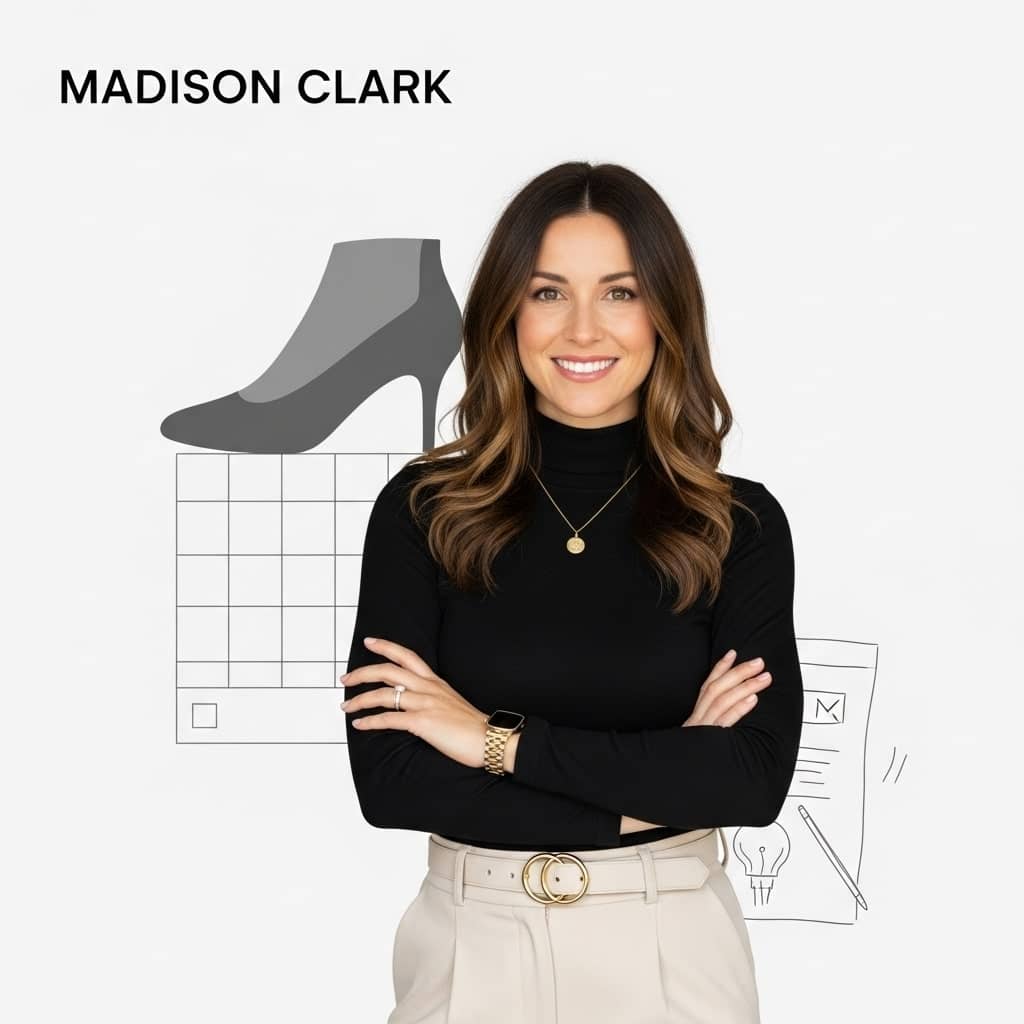
Madison Clark is a footwear expert and the voice behind MyStyleGrid.com. She specializes in honest shoe reviews, style tips, and practical guides to help readers find the perfect pair for any occasion. With years of experience in blogging and content creation, Madison makes footwear knowledge simple, stylish, and easy to follow.

